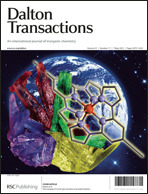By means of density functional theory and statistical mechanics, we investigate the geometric and electronic structures, thermodynamic stability and infrared (IR) vibrational frequencies of alkaline earth metal endohedral fullerenes, M@C76 (M = Ca, Sr, and Ba). The results reveal that M@C1(17 459)-C76 possesses the lowest energy followed by M@C2v(19 138)-C76 with a very small energy difference. Both the structures have a pair of adjacent pentagons and are related by a single Stone–Wales transformation. Equilibrium statistical thermodynamic analyses based on Gibbs energy treatments suggest that M@C1(17 459)-C76 has a prominent thermodynamic stability at higher temperatures, in contrast with M@C2v(19 138)-C76 whose thermodynamic stability is affected by the encapsulated metal atom. The encapsulated metallic atoms as well as cage structures significantly influence the electronic properties of endohedral fullerenes such as electron affinities and ionization potentials. On the other hand, the singlet–triplet splitting energy ΔE(S–T) depends on the cage structures. In addition, IR spectra and chemical shifts of these compounds have been computed to assist further experimental characterization.

You have access to this article
 Please wait while we load your content...
Something went wrong. Try again?
Please wait while we load your content...
Something went wrong. Try again?


 Please wait while we load your content...
Please wait while we load your content...